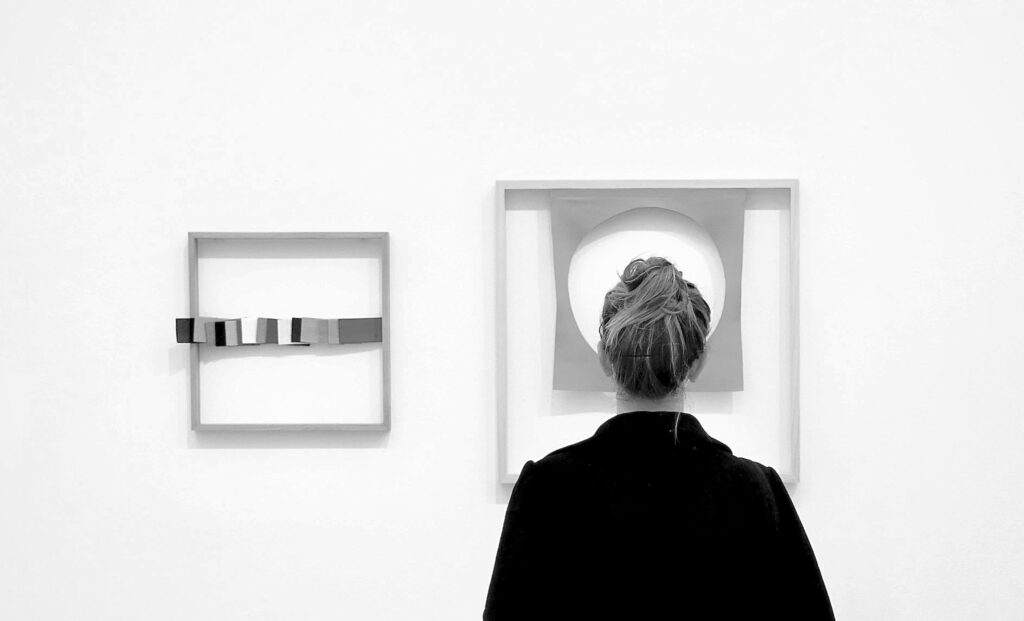The song ‘I giovani d’oggi non valgono…’ (The youth of today are not worth…) by Ex-Otago certainly does not apply to the dynamism of Michela Coslovich from Trieste. We met her during the launch of the Visual Hub website and she immediately showed great enthusiasm for our work. She has a varied career: copywriter, social media manager, curator and consultant for artistic and cultural projects.
Michela Coslovich has been writing for national and international magazines since 2020. In the same year she co-founded fuori edicola, a project dedicated to the promotion of independent publications. Passionate about the relationship between photography and publishing, she develops experimental programmes in this field. In 2024 she founded cont.images, a digital cluster that organises exhibitions, workshops and other events to promote contemporary photography in Italy.
How do you select the projects you work on? What criteria do you consider most important?
I am currently dedicated to curatorial projects whose main objective is the promotion and dissemination of contemporary photography. In this context, I actively collaborate with artists, foundations, cultural associations and art galleries that need strategic and curatorial support to develop and enhance their initiatives.
My training stands at the intersection of curating and cultural communication, allowing me to integrate both fields in a cross-sectoral perspective, creating a constant dialogue between them.
Recently, my interest has been particularly focused on the relationship between visual arts and nature, as well as transfeminist issues, which represent a critical lens through which I analyse and interpret the contemporary. Furthermore, I am carefully exploring the concept of post-photography, investigating how photography, which is constantly developing, can interact with the natural dimension and gender issues, transforming the way we perceive and represent reality through images. This interest drives me to explore new expressive languages and to create synergies with artists and institutions that share an innovative and experimental vision of the photographic medium.
how did thefuori edicolaproject come about and what is it all about??
Since my university studies, I have always felt torn (or rather ‘multiplied’) between two great passions: art and publishing. These two worlds have been a source of inspiration and enrichment for me and, thanks to fuori edicola, I have managed to find an ideal meeting point between them. Today, this project represents a creative space that allows me to develop cultural dissemination initiatives both in my city, Trieste, and throughout the region, with the hope of soon spreading our activities beyond local borders.
The idea of fuori edicola actually originated with Matteo Verazzi and Nina Alexopoulou, who first saw the potential of bringing to Trieste the unique experience of getting in touch with “beautiful paper,” collaborating with a Perugian reality to which we are particularly attached: Edicola 518, which represents one of the most innovative and interesting experiences in the Italian publishing scene and inspired us to develop a public presentation of independent publishing in our territory as well. When I started collaborating with Matteo, we immediately felt the need to structure events in a new and engaging way. So we developed a new format for our meetings and book presentations, tying each event to a specific theme, which would allow us to create connections with other cultural and artistic realities, both local and national. Our ambition is always to stimulate dialogue and discussion among different actors in the cultural world, fostering the creation of a network that gives rise to new perspectives in the field.
What fascinates us most is precisely the ability to build connections, not only between books and audiences, but also between different artistic and cultural disciplines. Each talk or presentation thus becomes an opportunity to explore new contaminations and to foster open discussion on current and relevant issues. We are constantly looking for ideas that will allow us to enrich the cultural offerings of Trieste, creating a bridge between publishing, art, architecture, sound and other creative fields.

In 2024 you started ‘cont.images’. Which initiatives do you feel are closest and most representative of the project?
Over the past few years I have been working on developing art promotion projects with the aim of bringing some form of order and coherence to the complex and often fragmented landscape of visual arts events. One of these projects is cont.images which began as an experiment and then evolved into a digital platform that is now a digital hub where I collect and promote, through social media, exhibitions, events, talks and fairs related to contemporary photography and the moving image in Italy.
The idea behind the project is to offer a compass for orientation in the dynamic and constantly evolving art scene, acting as a point of reference for both professionals and enthusiasts. I am committed to carefully curating the selection of content, ensuring a comprehensive and high quality overview of the most interesting and innovative initiatives being undertaken. After a summer break, I am ready to resume by expanding the scope of cont.images and introducing new collaborations and projects. The aim is to make this space ever more inclusive and relevant, not only as a channel of information, but also as a place of dialogue and confrontation for all those who would like to develop the link between the visual arts and the contemporary world.
What are the emerging trends in contemporary photography that you find most exciting, and how do you plan to incorporate them into your future projects?
I am very interested in the way in which we are increasingly approaching a post-photographic dimension, in which the concept of the ‘visual’ is assuming a predominant role, surpassing the traditional dynamics related to the photographic act itself. This shift in focus represents a liberation from the technical constraints of photography, paving the way for new explorations that question the boundaries between image and reality, between document and artistic interpretation.
The post-photographic world allows us to look beyond the conventional photographic medium, exploring the image as a fluid and versatile tool, capable of interacting with other expressive languages. This approach amplifies our ability to critically reflect on images and their impact in our hyper-connected and visually saturated society. The development makes me particularly enthusiastic because it opens up new possibilities for dialogue between the visual arts, redefining the boundaries between photography, digital art and multimedia.
Is there a photographer from Friuli Venezia Giulia whom you particularly admire and whose career you appreciate?
I truly believe that Friuli Venezia Giulia is a region rich in visual artists who work in an extremely interesting and innovative manner, contributing to a particularly vibrant, but at times, little-known art scene. Over the past few years, I have had the privilege of collaborating with a number of local talents, and among them I have been particularly struck by the work of Marcello Maranzan, an emerging figure with a unique photographic approach, capable of narrating the world through a deeply sensitive and detail-oriented gaze. His most recent projects demonstrate a growing maturity and an ability to explore new visual narrative forms. In addition, I would like to mention two artists who are making a significant contribution to the visual arts scene in our region: Martina Zanin and Giulia Iacolutti. Both, with their multidisciplinary works, explore complex and profound themes, offering an original and bold perspective. Zanin, through her works, manages to fuse intimacy and personal memory, while Iacolutti addresses social and identity issues with an engaging visual approach.
Where would you like to go with your work? What are your professional expectations?
My greatest goal remains to actively contribute to the artistic and cultural growth of my city, Trieste, giving it the aspiration and recognition it deserves and which unfortunately, for too long, has not been valued by those in charge.
When I think of a professional aspiration, I think of a physical space that can serve as a meeting and exchange point for artists, curators and cultural workers. A place that is not only an exhibition center, but also a laboratory of ideas, a creative hub where innovative projects are born and developed. This space could become a real cultural cluster, capable of fostering synergies and collaborations between different artistic realities, both local and international, promoting the sharing of skills and resources.
The idea is to build an open and inclusive environment, where art and culture can dialogue constantly, and where meaningful connections between different disciplines can be created. My hope is that this space can help strengthen the cultural fabric of Trieste, making it a point of reference for the contemporary art scene.
What do you appreciate most about Trieste and what aspects of the city would you like to improve?
Building on what has already been expressed above, I believe that the Trieste administration is often stuck in a rhetoric that considers art primarily as a mere profit-making tool.
However, I am very proud to see that realities are emerging that break away from this logic, trying to redefine the concept of art and culture in a more inclusive and meaningful way.
Realities such as Pop Adriatico, Clanz and Studio Na Krasu are just a few of the initiatives that I frequent and that, in recent times, have significantly shaken up Trieste’s cultural life. They encourage experimentation, dialogue and collaboration between artists, curators and the community, helping to create an atmosphere of cultural ferment that is much needed among our streets. Certainly, if the junta were more open and collaborative, we could realize even more ambitious and engaging projects. However, perhaps this is precisely Trieste’s destiny: to be a resilient and combative city, capable of facing and overcoming the limitations of traditional rhetoric. Our strength lies in our ability to adapt and innovate through the arts, to find new ways and make meaningful connections despite the limitations imposed on us.
You were involved in the AiR Trieste residency. Can you tell us what that experience was like and what you learned from it?
AiR Trieste is an artistic residency program designed to offer international visual artists the opportunity to spend time in the city and surrounding areas of Trieste, engaging in contextualized projects or conducting research that can utilize and enhance local resources. AiR Trieste’s vision is based on the idea that collaborative networking is an essential means for research and growth, and that artists can act as true agents of cultural contamination.
I had the pleasure of meeting the project’s curator, Francesca Lazzarini a few years ago during the vernissage of an exhibition, and immediately a connection was sparked that led us to converse deeply about issues that concern us. Some time later, Francesca Lazzarini and Giulio Polita (Project Tutor) proposed me to join them to contribute to this reality, and for more than two years I have been in charge of the communication and dissemination of the art residencies. In particular, we devote ourselves to in-depth research, study of available opportunities, writing calls and projects aimed at promoting and developing visual art in our city, creating connections with other realities, both national and international.
On a professional level, I have had both the opportunity to stimulate my creativity in the field of online cultural communication, and the chance to get in touch with artists and other curators whom I respect and with whom I share aspirations and projects.
From this meeting with Michela, we begin to explore the world of visual professions through the words of its protagonists. Enjoy listening!
In Roland Barthes’ The Clear Room, the punctum is that element of a photograph that deeply affects the viewer. Is there a photograph of yours that you consider particularly significant, that had a strong emotional impact on you? Can you describe it and tell the story behind it?
Listen: Kukerle Coslovich
In the photos: Michela Coslovich, back portrait of Giulia Traina, 2019, Michela Coslovich, portrait of Sara Velenik, 2021, (all photos: courtesy Michela Coslovich)



